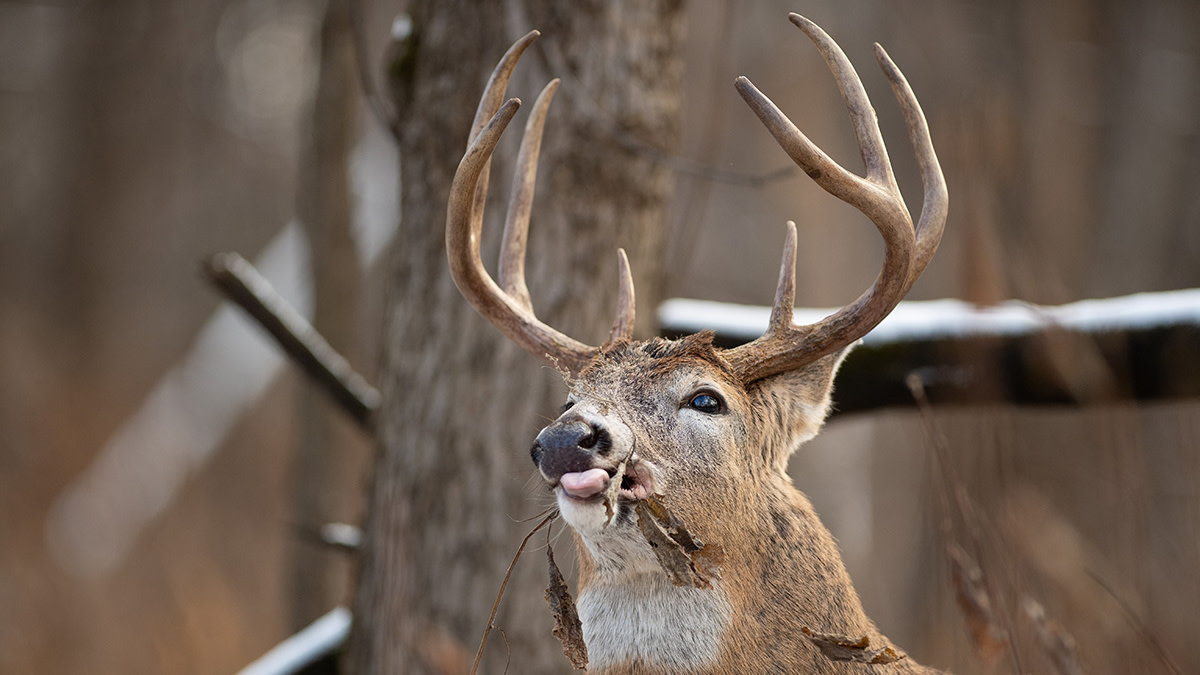
Ask anyone what is the key to late-season whitetail success, and I can almost guarantee you the first word out of their mouth will be “food.”
Food is the name of the game when we get late into the year, and the reasons for that are clear. Deer are now almost entirely focused on recovering from the previous month of rutting activity and packing on calories for the long winter ahead. This being the case, most late-season hunting strategies are pretty simple. Hunt over corn, a standing soybean field, a brassica food plot, or some other tried-and-true late-season food source, and wait for the deer to show. But what if those crops aren’t around?
This is the situation many hunters find themselves in when hunting public land or big woods terrain where farm fields aren't present. Fortunately, whitetails have evolved to survive just fine without agriculture and so can deer hunters. Here are three natural food sources that both deer and deer hunters can benefit from in the later weeks of the season.
Red Osier Dogwood “A lot of high quality and more desirable food sources are dwindling once we reach late season,” Dylan Lenz of Whitetail Habitat Solutions told MeatEater. “So, you’re really trying to find something stable.”
One such stable species where Lenz hunts in Central Wisconsin and across many other parts of the country is red osier dogwood. “It’s typically located in secure cover, its dense pockets provide thermal protection, and the browse-resistant new growth that regenerates each year offers stable nutrition that deer don’t have to travel long distances to feed on,” he said. All of this makes red osier a particularly useful food source to hunt near in December or January.
Red osier is a 3- to 9-foot-tall shrub and the most widespread native dogwood found in the United States. Per the U.S. Forest Service, it can be identified by its “flat, umbrella-like cluster of small four or five-petal white flowers and oval leaves with prominent veins that gently curl to trace the shape of the leaf margin.”
Red Oak Acorns While white oak acorns get most of the attention when it comes to attractive natural food sources for whitetails, late season is the red oak’s time to shine. Red oak acorns, while high in desirable fat, are known to be more acidic and typically less palatable to deer than white oaks. But things switch up later in the year, mostly because of availability.
“They are a high-quality food when most food sources are dwindling,” North Carolina deer biologist Moriah Boggess said. “White oak acorns germinate as soon as they fall to the ground and encounter moisture, sometimes as quickly as within a day. Red oaks, however, persist on the ground all winter long before germinating in the spring.”
As the song goes, “Love the one you’re with,” which is exactly what whitetails do when red oaks are the main food source left in the cold winter months. Boggess notes that this diet switch to red oaks has been confirmed by several studies, including his own master’s degree research. While there are many different red oak species and nuanced ways to identify them, a red oak can be most easily differentiated from white oak by its pointier and more defined leaf edges.
Any Ol’ Clear Cut I know, this is cheating. But I’m standing by it. If you’re not comfortable identifying specific plant types on the go or simply don’t think any of the aforementioned species are present in your area, I want to emphasize the late season attracting power of any clear cut or area in which significant logging has occurred. In any forest area that’s been thinned or cut, the increased sunlight will spur new, nutritious growth that deer will focus on without a doubt. If you’re hunting in the big woods where agriculture isn’t available, these will be a significant draw in December and January.
“There are so many browse options in clear cuts that it makes them a super secure food plot for deer,” Alabama public land hunter Parker Macdonald said. “Once the rut is over, they almost never leave these thickets.”
Whitetail expert Dylan Lenz agrees. “Isolated, unpressured timber harvest areas are usually stacked with activity,” Lenz said. It’s in these zones that you can find a whole host of desirable browse species like aspen, maple, honey suckle, multiflora rose, raspberry, and more.
Whether it be these specific food sources or others entirely, deer will be browsing every winter on a variety of natural trees, shrubs, and grasses. Find the food of choice in your area and you’ll find the deer.
Feature image via Matt Hansen








Conversation